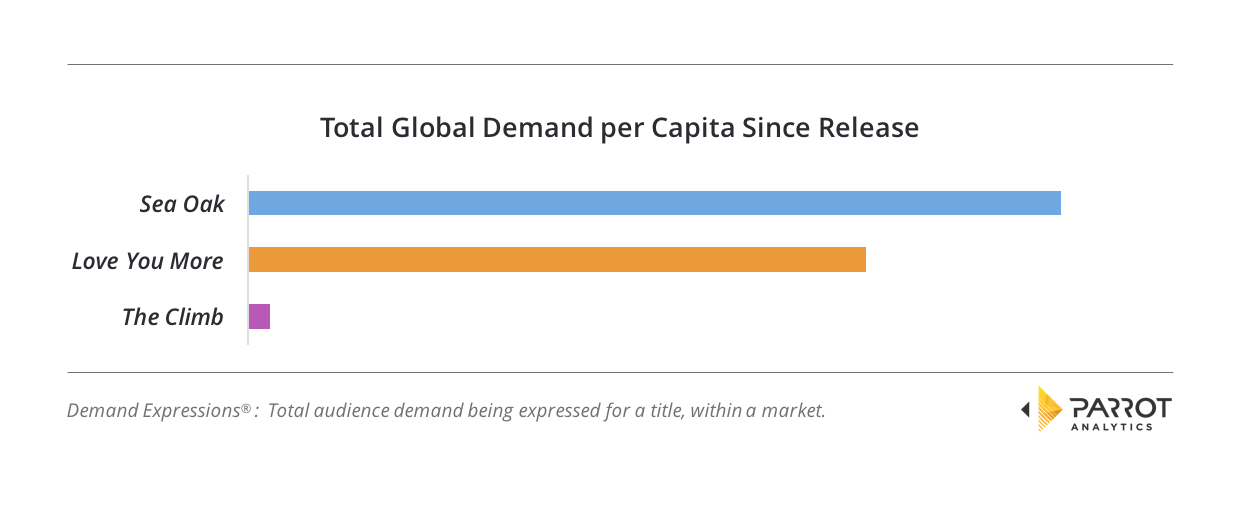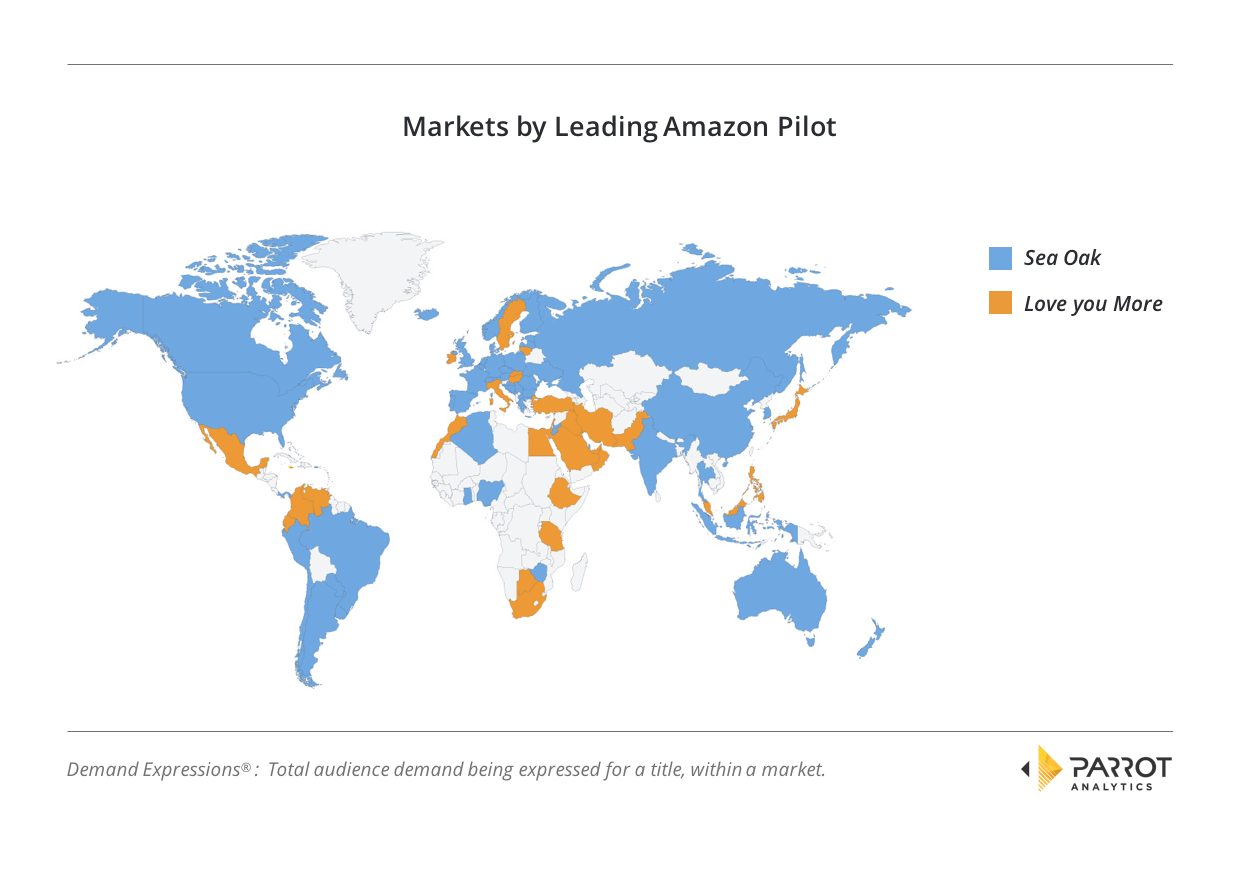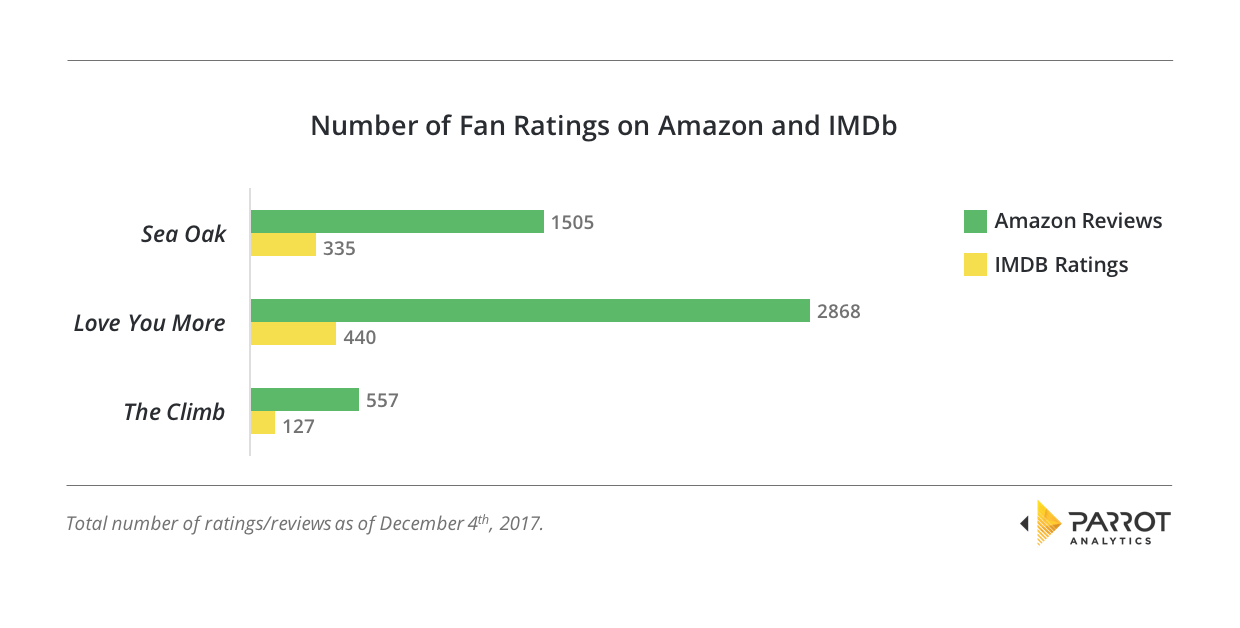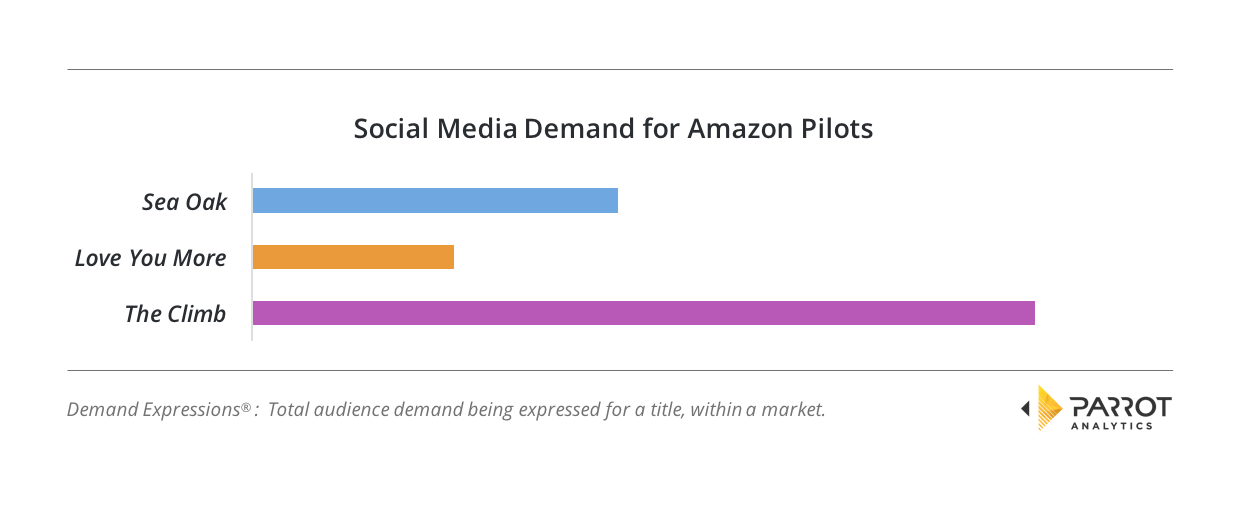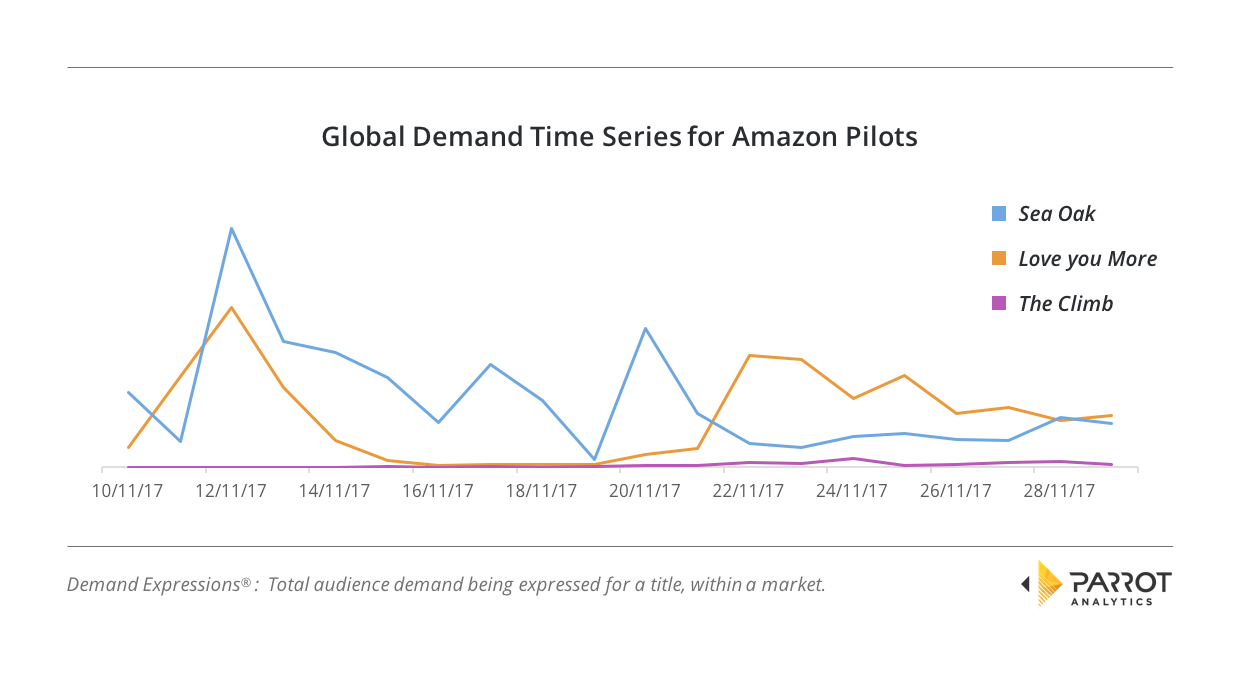Image: (from left) Sea Oak, Love You More, and The Climb, Amazon Video
On November 10th, Amazon released its latest batch of television pilots. The first episodes of three comedies—Sea Oak, Love You More, and The Climb—were posted for Amazon Prime subscribers to watch and review, helping the platform choose which of them to order for a full season. Amazon has had great successes with the program, with hits such as The Man in the High Castle proving their worth to the platform with only one episode. However, on December 18th, Amazon judged that these titles were not worthy and passed on all three. Could these shows have a future somewhere else?
Though Amazon, as with all SVOD platforms, does not release viewership data for its shows, we can get a picture of how the pilots were doing by using demand data. Demand data involves both consumption (in the form of P2P downloads and streams) and fan reactions (in the form of social media and fan site data). By looking at the demand, normalized by population, for the three weeks after the pilots premiered, we can judge how popular they were, relative to each other.
Sea Oak, led by Glenn Close, had 32% more global demand than Bridget Everett’s Love You More, making it the most popular pilot this season. Both pilots had nearly 30 times more demand than The Climb, which seems to have failed to find a large global audience. In fact, while both Sea Oak and Love You More had markets where they were the most popular Amazon pilot, The Climb was not on top anywhere.
Sea Oak had the most demand out of these pilots in over 60% of countries, including large markets such as the US, Brazil, China, India, and the UK. Love You More was the most popular pilot in only about 40% of markets, ranging from Ireland to the Middle East to Africa to Japan. Both titles appealed to a wide variety of markets, which would make them valuable for an international venture such as an SVOD platform, like Netflix, or channel, like HBO or Sky.
While the global appeal of the titles was likely important to Amazon, their main input to the pilot program was customer feedback. The only publicly available metrics for the Amazon pilots on Amazon itself is the number of reviews each title has accrued. In addition, IMDb (which is owned by Amazon) reports how many people rated the pilots. By ranking the pilots by these metrics, we get a view into the fan’s opinions for the shows, adding another dimension to their value.
In contrast to the demand results, Love You More was on top with 31% more reviews and 91% more ratings than Sea Oak. The Climb was still the least popular pilot by these metrics, though not by as large a margin. These results indicate that while Love You More may have had less demand than Sea Oak, the people who did watch the show were vocal about it. This passion can translate into success: fans may tune in or subscribe to a channel or platform for the show and share it with their friends, thereby increasing the audience for Love You More.
While Sea Oak and Love You More were both popular shows by global spread and fan reviews, The Climb lagged behind. However, by looking at the social media component of demand, we find that The Climb did overtake the other two pilots in this aspect.
The Climb had more than twice as much social media demand as the other two shows, while Amazon review favorite Love You More had the least amount of social media demand. This result may point to a difference in audience demographics: fans of The Climb, which features a pair of women in their 20s who are using their social media popularity to seek fame, may be younger and so more likely to use social media to express their desire for the show. Since these two shows would likely do best in different types of places, with The Climb succeeding on a youth-focused channels or platforms such as the CW or Freeform.
Lastly, the global demand for the three pilots is plotted to see how the popularity of each developed over time:
These demand patterns reveal how people responded to the pilots. Sea Oak and Love You More peaked during the first weekend after release, declined over the next week, then had a resurgence in the week after that. While initial interest in Sea Oak was 50% higher than Love You More, Love You More had more demand later, likely because of its passionate fans who wrote reviews and promoted the series. In contrast to the two other pilots, The Climb had very low initial interest, but demand increased over time. This pattern in demand is most often seen with cult or sleeper hits, where its popularity builds slowly as word spreads about the show. Therefore, Sea Oak and Love You More would be best on traditional platforms where creating a big initial impact is important, while The Climb would do best on a platform willing to give it time to grow.
The differences between demand, Amazon reviews, and social media illustrates the value of comparing multiple metrics when judging TV shows.
- Based solely on the number of Amazon reviews, Love You More looked to be twice as popular as Sea Oak.
- The number of IMDb ratings suggested that the gap between the two shows was not as large as the Amazon reviews would indicate.
- In fact, demand data revealed that Sea Oak actually had more global consumption in total than Love You More, though most of this demand was right after release.
- Finally, social media data indicated that The Climb was on top.
This analysis reveals a nuanced picture of the pilots’ popularity: more people checked out Sea Oak initially (perhaps because of Glenn Close’s star power), but Love You More inspired more passion in people, who then went on to write a review for it. The Climb had a smaller but passionate and growing fan base who live on social media. None of them were hits in all categories, though, and so were not “the next Game of Thrones” as Amazon (and many other platforms) is looking for.
However, these pilots could still be a good acquisition for another channel or platform. Television channels and advertisers often want young adult viewers and so could use shows like The Climb as a way to attract this demographic. SVOD platforms, which rely on subscriptions, need both series with broad appeal, like Sea Oak, to bring viewers to the platform and niche series that strongly appeal to a certain audience, like Love You More, to keep people subscribed; this concept is further explained in this recent Variety Innovate video. Though Amazon passed on these pilots, these titles have proven that they still have the potential to succeed elsewhere.
